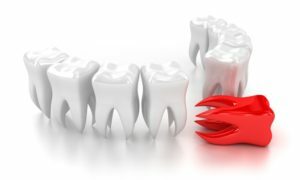 Removal of the tooth - this is necessarily damage to the tissue, which means the bleeding that has opened. If the blood goes too long, you can not leave the situation without seeing a doctor.
Removal of the tooth - this is necessarily damage to the tissue, which means the bleeding that has opened. If the blood goes too long, you can not leave the situation without seeing a doctor.
Cases of vascular damage are frequent, which causes severe bleeding. It is not always possible to stop it yourself, so you can not do without qualified help.
Contents of
- How long does the blood go after removing the tooth?
- Formation of the blood clot
- A bloodstream. ..
- We need to take action!
- What can not be done?
- When should I see a doctor
- How many can blood go?
How long does the blood go after removing the tooth?
Removal of the tooth is accompanied by a rupture of the gingival tissue, so it will not be possible to avoid bleeding. True, there are situations when the blood goes on too long, and the patient does not take any steps, because he believes that this is not a problem at all.
Once the dentist has pulled out the tooth, a cotton swab is placed in the place of the socket, which must be pressed tightly and bitten.
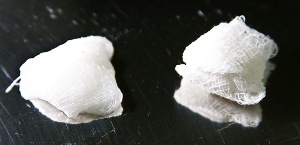 Keep it for 30-45 minutes. If after the lapse of time the result is not followed, you can leave the tampon for a short time interval so that the blood can curdle.
Keep it for 30-45 minutes. If after the lapse of time the result is not followed, you can leave the tampon for a short time interval so that the blood can curdle.
If the blood does not stop for more than two hours, you should contact your dentist to find out the cause of the bleeding.
Formation of the blood clot
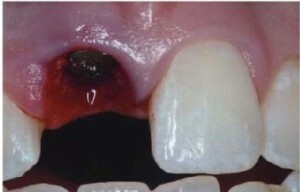
On the photo of the blood clot
The blood stops when a blood clot appears that blocks the wound from the external environment, promotes healing and prevents the ingress of bacteria. Due to the fact that the clot is very important for the early healing of the socket, it can not be removed from the gums.
Rinse can displace the clot and open an unextended wound. In addition, the use of hot food or beverages promotes dissolution of the formed film. At first, you should stop smoking and drinking alcohol, using straws when drinking beverages.
And the blood is a river. ..
There are several reasons why bleeding can be delayed.among them:
-
 damage to large vessels;
damage to large vessels; - increase in pressure, which can be triggered by stress;
- medical error, as a result of which there was a piece of root inside, not allowing the tissue to grow together;
- blood coagulability problems, which the patient should be aware of himself;
- presence of diseases that prevent blood clotting, for example, leukemia, hepatitis and others;
- Failure to comply with regulations that caused the clot to move or disappear.
We need to take action!
 The easiest way to stop bleeding at the site of the removed tooth is to clip the wells with a sterile swab.
The easiest way to stop bleeding at the site of the removed tooth is to clip the wells with a sterile swab.
This method is followed by a doctor after the procedure and it can be used if for some reason the blood clot has retired and the blood has gone again. The wound should be treated with hydrogen peroxide 3% and tightly clamped with a cotton swab.
If the fleece is impregnated not completely, then the blood stopped. It is advisable to wait a little more, so that the blood clot is firmly entrenched.
Anesthetic preparations, , but not Aspirin or Ketanov are allowed to relieve the pain syndrome, as they reduce the blood's ability to clot. This can cause prolonged bleeding.
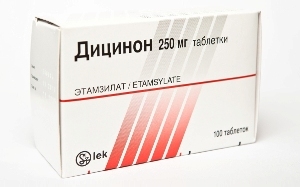 Sometimes, due to high blood pressure, blood does not stop. In this case, you need to drink tablets that normalize the pressure.
Sometimes, due to high blood pressure, blood does not stop. In this case, you need to drink tablets that normalize the pressure.
To stop the blood, you can take the medicine Dicinon. True, it is important to read the instructions for use, since the tool has contraindications.
What can not be done?
After tooth extraction, the dentist is required to give the patient recommendations that need to be followed to avoid complications. These include:
-
 quitting smoking and alcohol;
quitting smoking and alcohol; - prohibition of rinsing, brushing teeth on the side of the removed tooth, the use of chewing gum;
- rejection of solid and hot food, as well as cold;
- refraining from strong physical exertion;
- prohibition to use a warm bath and shower, as well as saunas or baths.
All restrictions apply in the first day after tooth extraction, but you need to focus on individual characteristics. If the body is characterized by slow healing, it is better to be careful with the effects on the hole.
What to do after tooth extraction the dentist will tell:
When to call a doctor
If the bleeding is severe and does not stop for a long period, there is every reason to call a dentist. In the daytime, you can come to the doctor who removed the tooth.
If the hole began to bother at night, you can go to the 24-hour dentistry, where they will provide emergency assistance. It's not advisable to sit behind the wheel, as bleeding causes weakness and distraction, which can adversely affect driving.
Do not neglect the services of the First Aid. At night, specialists will come to the house and be taken to the duty unit.
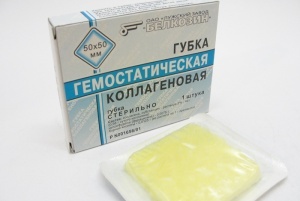 Prolonged bleeding, which stops, then appears again, and severe pain can be a sign that a piece of tooth remains in the tissues. Such a condition can easily be diagnosed with an X-ray. To remove it, surgical intervention may be required.
Prolonged bleeding, which stops, then appears again, and severe pain can be a sign that a piece of tooth remains in the tissues. Such a condition can easily be diagnosed with an X-ray. To remove it, surgical intervention may be required.
If the patient suffers from poor blood coagulability, the dentist should immediately notify the dentist so that he immediately takes appropriate measures: he has stitched, established a hemostatic sponge and prescribed medication in case of prolonged healing.
How many blood can normally go?
Tooth extraction is always accompanied by bleeding from the socket, but it should not be excessively copious and prolonged. Normally, the amount of secretion is significantly reduced after 40 minutes and completely stops after 3 hours.
The dentist will certainly explain how to behave for better healing, but in case of complications, it is necessary to seek the help of a specialist who will re-disinfect the wound and put the stitches.
